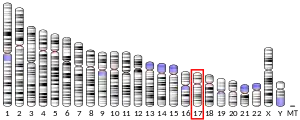| ABCA5 | |||||||||||||||||||||||||||||||||||||||||||||||||||
|---|---|---|---|---|---|---|---|---|---|---|---|---|---|---|---|---|---|---|---|---|---|---|---|---|---|---|---|---|---|---|---|---|---|---|---|---|---|---|---|---|---|---|---|---|---|---|---|---|---|---|---|
| Identifiers | |||||||||||||||||||||||||||||||||||||||||||||||||||
| Aliases | ABCA5, ABC13, EST90625, ATP binding cassette subfamily A member 5, HTC3 | ||||||||||||||||||||||||||||||||||||||||||||||||||
| External IDs | OMIM: 612503 MGI: 2386607 HomoloGene: 10263 GeneCards: ABCA5 | ||||||||||||||||||||||||||||||||||||||||||||||||||
| |||||||||||||||||||||||||||||||||||||||||||||||||||
| |||||||||||||||||||||||||||||||||||||||||||||||||||
| |||||||||||||||||||||||||||||||||||||||||||||||||||
| |||||||||||||||||||||||||||||||||||||||||||||||||||
| |||||||||||||||||||||||||||||||||||||||||||||||||||
| Wikidata | |||||||||||||||||||||||||||||||||||||||||||||||||||
| |||||||||||||||||||||||||||||||||||||||||||||||||||
ATP-binding cassette, sub-family A (ABC1), member 5 is a protein that in humans is encoded by the ABCA5 gene.[5]
Function
The membrane-associated protein encoded by this gene is a member of the superfamily of ATP-binding cassette (ABC) transporters. ABC proteins transport various molecule across extra- and intracellular membranes. ABC genes are divided into seven distinct subfamilies (ABC1, MDR/TAP, MRP, ALD, OABP, GCN20, and White). This encoded protein is a member of the ABC1 subfamily. Members of the ABC1 subfamily comprise the only major ABC subfamily found exclusively in multicellular eukaryotes. This gene is clustered among 4 other ABC1 family members on 17q24, but neither the substrate nor the function of this gene is known. Alternative splicing of this gene results in several transcript variants; however, not all variants have been fully described. [provided by RefSeq, Jul 2008].
Clinical significance
Mutations in ABCA5 cause excessive hair overgrowth.[6]
References
- 1 2 3 GRCh38: Ensembl release 89: ENSG00000154265 - Ensembl, May 2017
- 1 2 3 GRCm38: Ensembl release 89: ENSMUSG00000018800 - Ensembl, May 2017
- ↑ "Human PubMed Reference:". National Center for Biotechnology Information, U.S. National Library of Medicine.
- ↑ "Mouse PubMed Reference:". National Center for Biotechnology Information, U.S. National Library of Medicine.
- ↑ "Entrez Gene: ATP-binding cassette, sub-family A (ABC1), member 5". Retrieved 2014-05-19.
- ↑ DeStefano GM, Kurban M, Anyane-Yeboa K, Dall'Armi C, Di Paolo G, Feenstra H, Silverberg N, Rohena L, López-Cepeda LD, Jobanputra V, Fantauzzo KA, Kiuru M, Tadin-Strapps M, Sobrino A, Vitebsky A, Warburton D, Levy B, Salas-Alanis JC, Christiano AM (2014). "Mutations in the Cholesterol Transporter Gene ABCA5 Are Associated with Excessive Hair Overgrowth". PLOS Genetics. 10 (5): e1004333. doi:10.1371/journal.pgen.1004333. PMC 4022463. PMID 24831815.
External links
- Human ABCA5 genome location and ABCA5 gene details page in the UCSC Genome Browser.
Further reading
- Hu Y, Wang M, Veverka K, Garcia FU, Stearns ME (2007). "The ABCA5 protein: A urine diagnostic marker for prostatic intraepithelial neoplasia". Clinical Cancer Research. 13 (3): 929–38. doi:10.1158/1078-0432.CCR-06-1718. PMID 17289887. S2CID 11849206.
- Dean M, Rzhetsky A, Allikmets R (2001). "The human ATP-binding cassette (ABC) transporter superfamily". Genome Research. 11 (7): 1156–66. doi:10.1101/gr.184901. PMID 11435397. S2CID 9528197.
- Kubo Y, Sekiya S, Ohigashi M, Takenaka C, Tamura K, Nada S, Nishi T, Yamamoto A, Yamaguchi A (2005). "ABCA5 resides in lysosomes, and ABCA5 knockout mice develop lysosomal disease-like symptoms". Molecular and Cellular Biology. 25 (10): 4138–49. doi:10.1128/MCB.25.10.4138-4149.2005. PMC 1087723. PMID 15870284.
- Saini V, Hose CD, Monks A, Nagashima K, Han B, Newton DL, Millione A, Shah J, Hollingshead MG, Hite KM, Burkett MW, Delosh RM, Silvers TE, Scudiero DA, Shoemaker RH (2012). "Identification of CBX3 and ABCA5 as putative biomarkers for tumor stem cells in osteosarcoma". PLOS ONE. 7 (8): e41401. Bibcode:2012PLoSO...741401S. doi:10.1371/journal.pone.0041401. PMC 3411700. PMID 22870217.
- Ohtsuki S, Kamoi M, Watanabe Y, Suzuki H, Hori S, Terasaki T (2007). "Correlation of induction of ATP binding cassette transporter A5 (ABCA5) and ABCB1 mRNAs with differentiation state of human colon tumor". Biological & Pharmaceutical Bulletin. 30 (6): 1144–6. doi:10.1248/bpb.30.1144. PMID 17541169.
- Nagase T, Kikuno R, Ohara O (2001). "Prediction of the coding sequences of unidentified human genes. XXI. The complete sequences of 60 new cDNA clones from brain which code for large proteins". DNA Research. 8 (4): 179–87. doi:10.1093/dnares/8.4.179. PMID 11572484.
- Vásquez-Moctezuma I, Meraz-Ríos MA, Villanueva-López CG, Magaña M, Martínez-Macias R, Sánchez-González DJ, García-Sierra F, Herrera-González NE (2010). "ATP-binding cassette transporter ABCB5 gene is expressed with variability in malignant melanoma". Actas Dermo-sifiliograficas. 101 (4): 341–8. doi:10.1016/s1578-2190(10)70645-4. PMID 20487690.
- Petry F, Kotthaus A, Hirsch-Ernst KI (2003). "Cloning of human and rat ABCA5/Abca5 and detection of a human splice variant". Biochemical and Biophysical Research Communications. 300 (2): 343–50. doi:10.1016/s0006-291x(02)02827-9. PMID 12504089.
- Allikmets R, Gerrard B, Hutchinson A, Dean M (1996). "Characterization of the human ABC superfamily: Isolation and mapping of 21 new genes using the expressed sequence tags database". Human Molecular Genetics. 5 (10): 1649–55. doi:10.1093/hmg/5.10.1649. PMID 8894702.
This article incorporates text from the United States National Library of Medicine, which is in the public domain.



